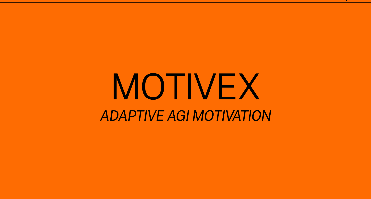
Prasad Kumkar
Project OwnerDefine overall MotiveX architecture and API semantics Lead formal specification of Drive modules and update dynamics Oversee integration of RL-inspired intrinsic drives and neuromodulatory signals
DEEP Connects Bold Ideas to Real World Change and build a better future together.
Coming Soon
MotiveX is a modular, extensible AGI motivation framework designed for Hyperon/PRIMUS. It formalizes Drive modules—each exposing computeUrgency(state):float & satisfactionPredicate:AtomPattern—and maps their output to Atomspace truthValues (urgency) and ECAN attentionValues. Core MeTTa routines (UpdateDrives, GenerateGoals, ApplyEthics) execute urgency updates, goal synthesis, & ethical filtering. The architecture supports human-like, alien, and RL-inspired intrinsic drives, augmented by neuromodulatory context signals. We will prototype in a distributed Atomspace testbed, measuring Drive Fulfillment Rate, Adaptivity Latency (<100 ms), Ethical Compliance (0 violations), & CPU overhead (<10%)
Develop a modular and extensible framework for integrating various motivational systems into AGI architectures, supporting both human-like and "alien digital" intelligences. This could be done as a highly detailed and precise specification, or as a relatively simple software prototype with suggestions for generalization and extension. Bids are expected to range from $15,000 - $30,000.
Conduct a comprehensive literature survey of existing AGI motivation models (Psi/OpenPsi, RL intrinsic drives, CLARION, psychological theories) and formalize the architecture of MotiveX. Define the Drive data schema, update dynamics, goal‐synthesis API, and high‐level integration points with Hyperon’s Atomspace, ECAN, and MeTTa.
A detailed technical specification document including: - Drive module schema and metadata fields - Motivation Engine pipeline (drive evaluation → goal generation → ethical filtering → attention dispatch) - Integration diagrams for Atomspace, ECAN, MeTTa - Preliminary ethical‐governor design
$4,000 USD
Specification reviewed and approved by stakeholders; covers all functional and non‐functional requirements; provides clear pseudocode/API sketches for each component.
Develop and deploy the core MotiveX prototype within a Hyperon sandbox. Implement MeTTa routines for drive updates, goal creation, ethical filtering, and ECAN attention injection. Build two representative demo agents—a conversational chatbot and a metaverse avatar—that utilize heterogeneous drives and ethical constraints.
1. MeTTa code library (UpdateDrives, GenerateGoals, ApplyEthics, DispatchAttention) 2. Two end‐to‐end demo scripts with recorded walkthroughs 3. README and basic integration guide for Hyperon environments
$8,000 USD
Prototype runs without errors in the Hyperon testbed; both demo agents generate and prioritize goals correctly; ethical filter blocks at least one simulated unethical goal; ECAN attention shifts observable in Atomspace.
Execute a rigorous evaluation of the prototype using defined metrics: Drive Fulfillment Rate, Adaptivity Latency, Ethical Compliance, Resource Overhead, and Behavioral Diversity. Analyze results, tune drive parameters and prioritization strategies, and refine the ethical governor. Produce a final evaluation report and optimized prototype release.
1. Quantitative evaluation report with charts and tables 2. Parameter-tuned MeTTa prototype code 3. Comparative analysis vs. baseline (no‐motivation) agents
$8,000 USD
Evaluation shows ≥ 90 % drive fulfillment, < 100 ms adaptation latency, zero ethical violations across adversarial tests, and ≤ 10 % CPU overhead; report validated by independent review.
Reviews & Ratings
Please create account or login to write a review and rate.
Check back later by refreshing the page.
© 2025 Deep Funding
Join the Discussion (0)
Please create account or login to post comments.